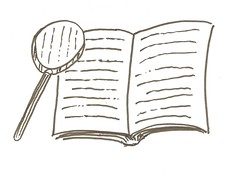
 Want to test your knowledge on paraphrasing and citing sources? Try your hand at a self-test, created by the Colby, Bates and Bowdoin Plagiarism Resource site.
Want to test your knowledge on paraphrasing and citing sources? Try your hand at a self-test, created by the Colby, Bates and Bowdoin Plagiarism Resource site.

All of us, faculty and students, draw from a vast range of ideas and findings in our work. This is a good thing! It allows us to learn and build on ideas and create new insights and knowledge.
The most important thing in this process is to give attribution -- to acknowledge the writing and ideas that have influenced us. Attribution shows respect and appreciation to people with interesting, challenging or worthwhile ideas. It's also useful; it allows others to find that source for themselves.
"magnifying glass" (CC BY 2.0) by Tall Chris
Common knowledge refers to information that:
Usually things that are common knowledge do not need to be cited. It is not always clear what information constitutes common knowledge, so if you're ever unsure, it's best to cite. Cal State San Marcos Library has more information on what constitutes common knowledge.
Paraphrasing ideas from your source and using direct quotations, with correct citations, are two ways you can use others' ideas to support or enhance your work.hese websites have great tutorials and examples, and can help you develop good paraphrasing habits.



